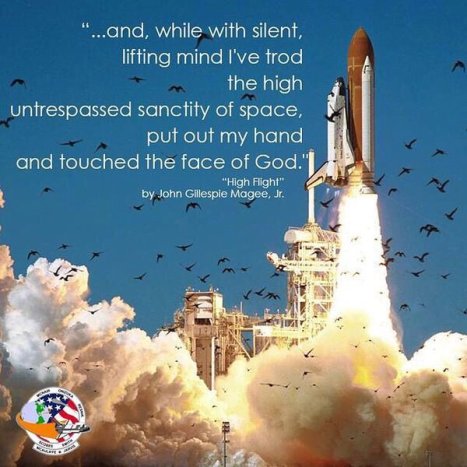
Thirty years.
On the day I heard the news at Huntsville Middle School, it had been 19 years and a day since the Apollo 1 fire. That was history, distant. Eight years before I was born.
Today, it’s been far longer than that since the loss of Challenger. And it it still looms. It’s still immediate. To be honest, in some ways, Challenger for me has left a scar deeper than the more recent Columbia.
Thirty years later, Challenger is a “why.” It motivates. It demands. It’s why we don’t take things for granted. It motivates better solutions. It demands our best. Never forget. Never forget. Never forget. Never again.
It’s an odd memory for me today. It’s something I remember as who I was then, and something I remember as who I am now. At this point, I’ve worked at NASA’s Marshall Space Flight Center for longer than I’d been alive when it happened. It is a part of our agency history, and it informs my professional life.
But that’s who I am now. Who I was then was a kid in middle school who grew up playing with toy spaceships. One of my favorites, which helped decorate a table at my wedding last year, was the Fisher-Price Alpha Probe, one of those early transitional toys that stopped showing spaceships as tall cylindrical things and started showing them with wings.
My connection to Challenger was not as immediate as it is now, but it was bigger in some ways. The shuttle wasn’t a vehicle, it was a national mythology and science fiction and hope and excitement and science. It was the future, wrapped in tile and foam and rocket engines. And thirty years ago today, I learned that even myths and science fiction and the future can fail. There was a little less magic in the world.
But the secret — part of the real legacy of Challenger — is that there’s not. There’s magic as long as we make it.
I had the opportunity to wander Tuesday through the Michoud Assembly Facility outside of New Orleans. The factory where the Apollo I crew’s rocket was built. Where the external tanks for the final flights of Challenger and Columbia were built. The factory where Neil Armstrong’s Saturn V was built and the tanks that held the fuel that launched the first shuttle and the last, the Hubble Space Telescope, the International Space Station.
The factory where the core structure of a spaceship that will go around the moon was just welded. The factory where the rocket that will send it there is being built.
On the way down, I visited some friends, and in the midst of the visit, they bought their son a spacecraft playset he can sit inside. One of the early transitional toys showing spaceships not as things that look like airplanes, but as tall rockets and exploration capsules that fly atop them.
Their son won’t remember the shuttle. Challenger and Columbia are ancient history for him. But he’ll be seven or eight when we launch this rocket. Old enough to know, and appreciate it. A thing of wonder and hope and excitement and science fiction and the future.
Filed under: Editorial, space | Tagged: Challenger, NASA, orion, SLS, space, Space Launch System, Space Shuttle Challenger |







Leave a comment